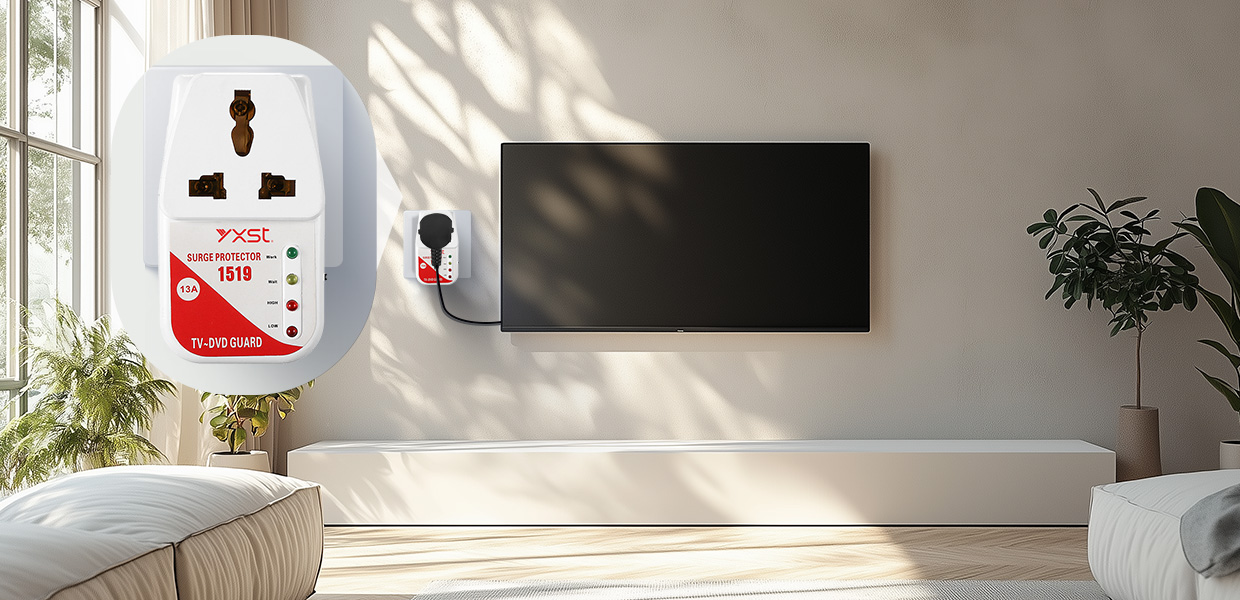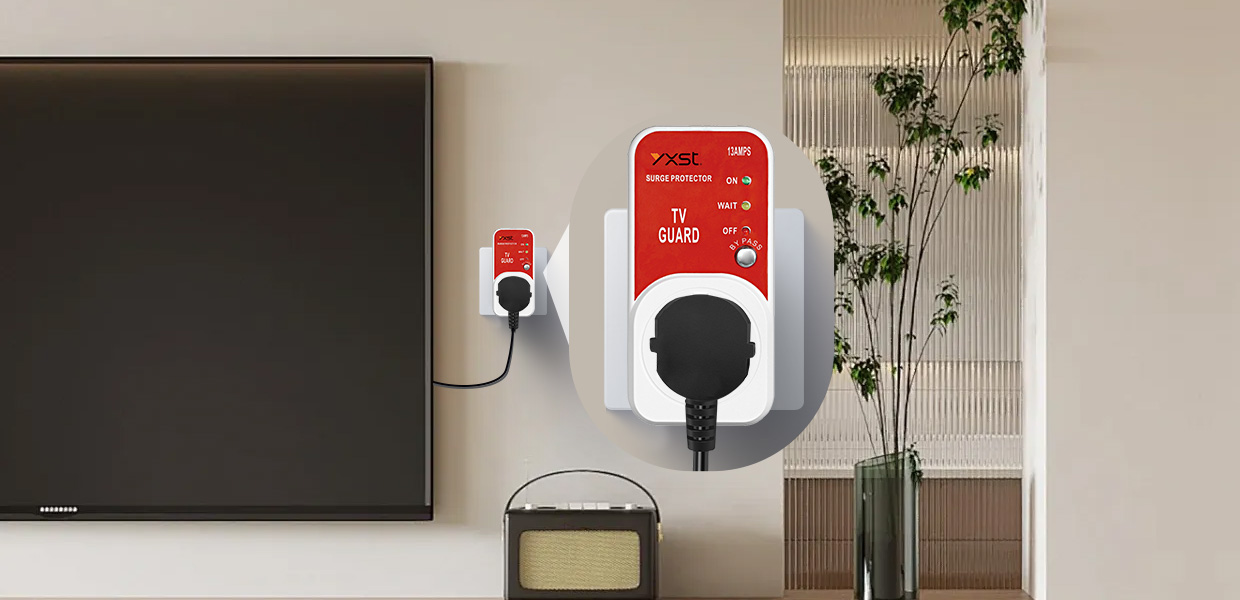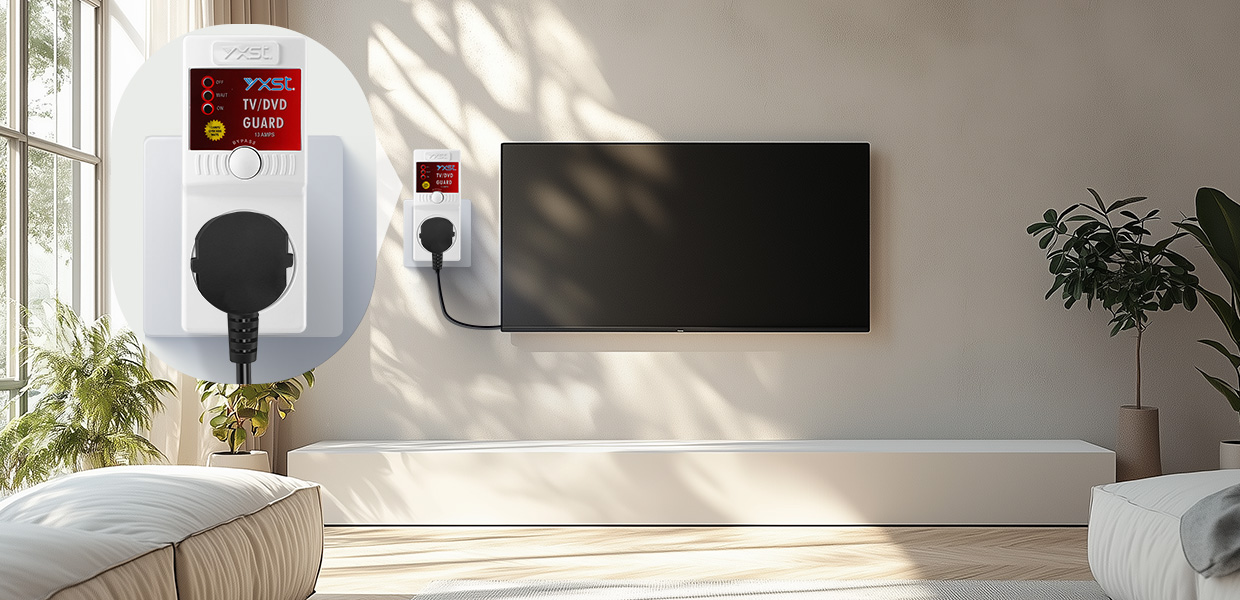TV Surge Protector Guide: Best Buy Picks, Joule Ratings, and Outlet Safety Tips
Date:2025-03-14 Click:716
Your TV is more than just an entertainment hub—it’s a significant investment. From 4K Smart TVs to gaming consoles, modern electronics are vulnerable to sudden voltage spikes caused by storms, faulty wiring, or power grid issues. A TV surge protector is your first line of defense, but not all models are created equal. How do you choose the best buy? What joule rating is right for your setup? And how do you safely use plugs and outlets to avoid overloads? This 2,000-word guide answers these questions, combining expert advice with actionable tips to keep your devices safe.
Why You Need a TV Surge Protector
Voltage surges can happen in milliseconds but cause irreversible damage to your TV’s delicate circuitry. Common causes include:- Lightning strikes near power lines.
- Power surges after outages.
- High-wattage appliances (e.g., AC units) cycle on/off.
A TV surge protector acts as a buffer, diverting excess voltage away from your devices. Unlike basic power strips, quality protectors feature components like metal oxide varistors (MOVs) and thermal fuses to absorb energy (measured in joules) and prevent fires.
How to Choose the Best TV Surge Protector: Key Factors
1. Joule Rating: How Much Protection Do You Need?The joule rating indicates how much energy a surge protector can absorb before failing.
- 1,000–1,500 joules: Basic protection for small TVs in low-risk areas.
- 2,000–3,000 joules: Ideal for 4K/OLED TVs, soundbars, and gaming consoles.
- 3,000+ joules: Best for premium setups in storm-prone regions.
Pro Tip: Always choose a protector with a joule rating higher than your TV’s value. For example, a $1,500 TV deserves at least 2,000 joules.
2. Outlet Types and Plug Configuration
- Number of Outlets: Ensure the protector has enough outlets for your devices (TV, streaming box, subwoofer, etc.). Look for models with 8–12 outlets.
- Spacing: Wide-spaced outlets prevent bulky plugs (e.g., AC adapters) from blocking neighboring ports.
- USB Ports: Some protectors include USB-A/USB-C ports for charging phones or tablets.
- Coaxial/HDMI Protection: Advanced models shield cable/satellite lines and HDMI-connected devices (e.g., gaming PCs).
3. Safety Certifications
- UL 1449 Certification: The gold standard for surge protectors, ensuring rigorous testing for clamping voltage and durability.
- ETL/CE Marks: Indicates compliance with international safety standards.
Best Buy: Top TV Surge Protectors of 2025
Here are our top picks for TV surge protectors, balancing joule ratings, outlet capacity, and value:1. 13A DVD Protector / TV Power Guard Voltage Protector 1519
- Main Features: Built-in thermal fuse technology, automatically cuts off power when current is overloaded to prevent fire risks.
- Best for: Carrying high-power devices (such as home theater audio, TV)
2. Single Phase Intelligent Voltage Protector 1905
- Main Features: Direct plug-in design, no wiring required, easy operation for the elderly.
- Best for: Mid-range TVs in apartments or condos.
3. Hot Sell TV Guard / DVD Guard Voltage Protector 9800
- Main Features: Compact design, plug-and-play socket and wall-mounted.
- Best for: Budget shoppers with small TVs.
Outlet and Plug Safety: What to Avoid
Even the best TV surge protector can fail if misused. Follow these rules:
Most protectors sacrifice themselves during a large spike. If the “protected” light turns off, replace the unit immediately.
Installation Tips for Optimal Protection
1. Use a Wall Outlet, Not an Extension Cord: For maximum safety, plug the protector directly into a wall outlet.
3. Label Connected Devices: This simplifies troubleshooting during surges.
FAQ: TV Surge Protector Questions Answered
Q: Can I plug my TV and gaming console into the same surge protector?




